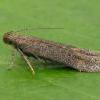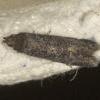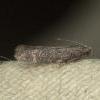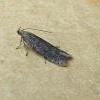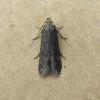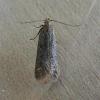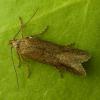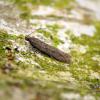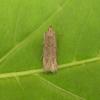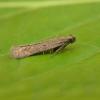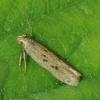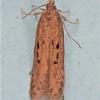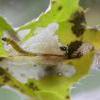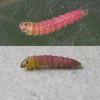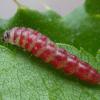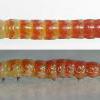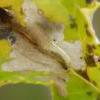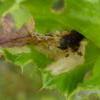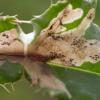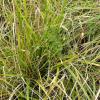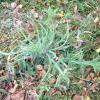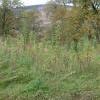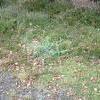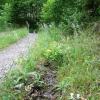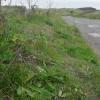35.109 Scrobipalpa acuminatella (Sircom, 1850)
Status and Distribution
Common to locally common throughout most of the British Isles and Channel Islands; apparently very local in Ireland.

Provisional map
Foodplant and Larval Feeding Signs
Carduus crispus (welted thistle) - noted as C. acanthoides, Carduus nutans (musk thistle), Cirsium acaule (dwarf thistle), C. arvense (creeping thistle), C. dissectum (meadow thistle), C. heterophyllum (melancholy thistle), C. palustre (marsh thistle), C. vulgare (spear thistle), Sonchus asper (prickly sow-thistle) in Cheshire during 2003 and Tussilago farfara (colt's-foot) where one was bred in Peeblesshire in 1990 - no further mines were found. For general guidance see the plant distribution map for Carduus species.
In Europe additionally recorded on Cirsium oleraceum and Carlina vulgaris (carline thistle) and probably also Cirsium erisithales and Carduus defloratus.
Records of larva on Centaurea species (knapweeds) by Sang in Durham (VC66) in 1912 and Michaelis in Derbyshire (VC57) in 1957 require verification.
Feeds within the lower leaves of the foodplant in an obvious upperside mine over the midrib, starting near the stem and often branching out sideways.
Habitat
Finding the Moth
Larva: makes distinctive large pale mines, which brown with age, over the midrib and branching sideways, usually at the base of leaves.
Adult: can be swept from the larval foodplant and comes readily to light.
Similar Species
The rather elongate, pointed forewing and generally uniform dark brown through reddish brown to greyish brown colouration, occasionally with indistinct blackish to reddish brown streaking and black speckling around the wing tip, are usually indicative of this rather variable species. The female is usually smaller and paler than the male. In the Highlands and Northern Scotland an attractive pale straw-brown form can occur which sometimes has areas of black spots at one third in the fold, just before one half in the centre of the wing and at two thirds in the centre - those examined with these black spots, to date, have all been males. It may be necessary to confirm identification by dissection with worn specimens or where one of the species below is being considered.
Other less frequently to rarely encountered Scrobipalpa species of about the same size which could be confused with S. acuminatella are:
S. clintoni - which lacks the light reddish brown or yellowish brown scales sometimes found in S. acuminatella
S. pauperella - which can be very similar to some forms of S. acuminatella but has slightly more slender forewings, a darker ground colour and any black spots are more distinctly surrounded with orange-brown scales
S. atriplicella - which has a creamy coloured underside to the abdomen (brownish fuscous in S. acuminatella).
Double brooded over much of the British Isles with a suggestion it may be single brooded in northern Britain. Flies from late April to June and late July to early September.
Earliest: 29th March 2003 (VC22)
Latest: 23rd September 2009 (VC39)

